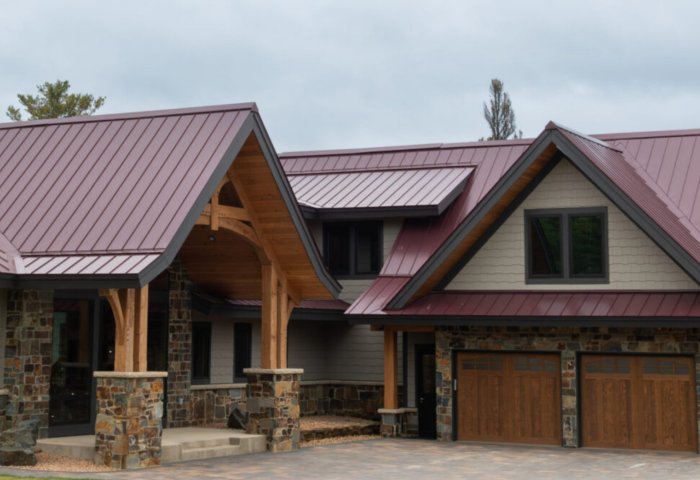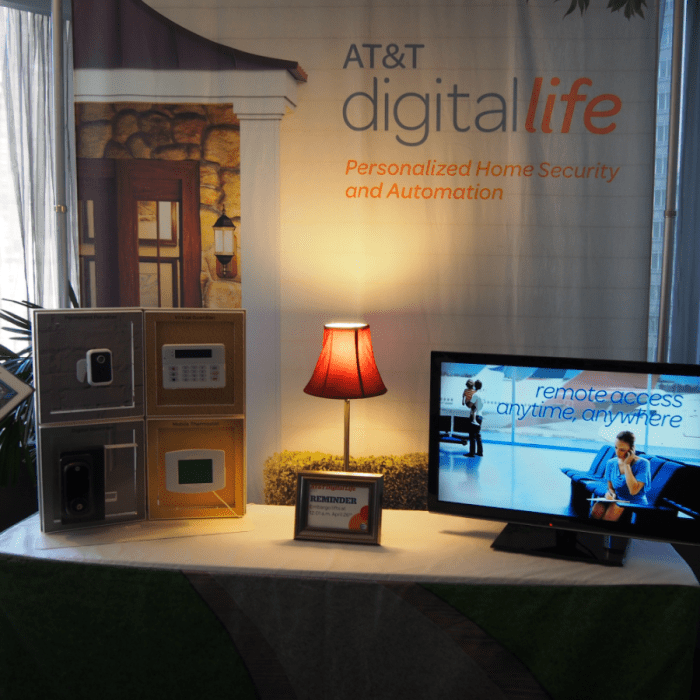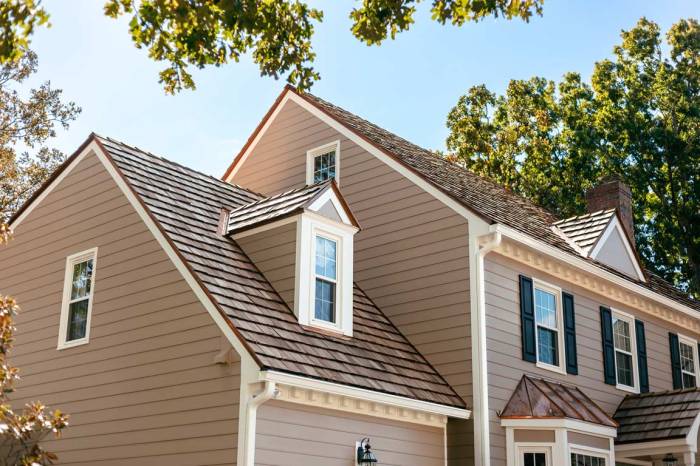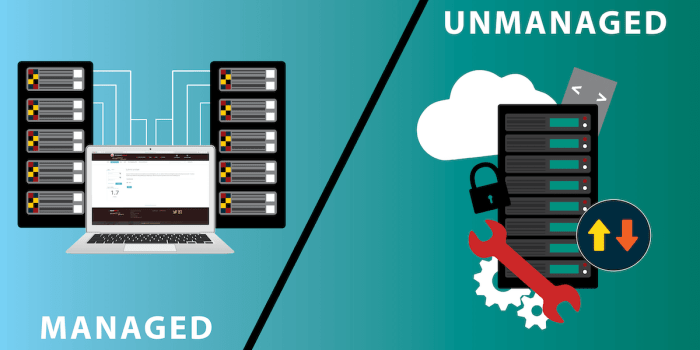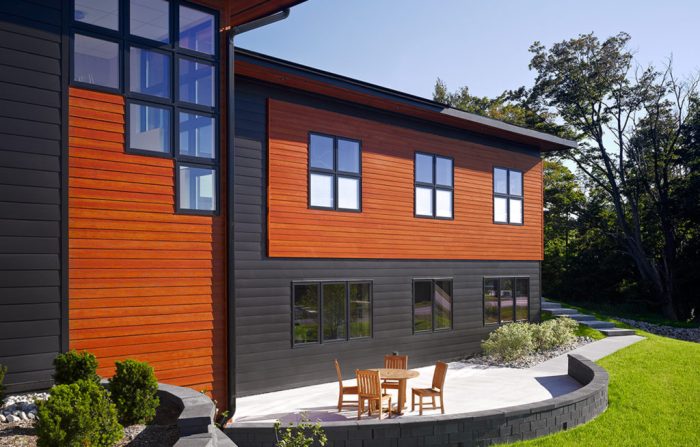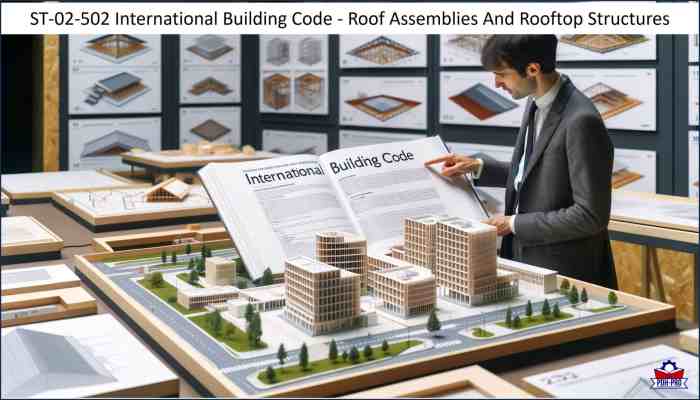Delving into the realm of new home siding options, this introductory segment aims to pique the curiosity of readers with a comprehensive look at the available choices.
The subsequent paragraph will provide detailed insights into the various siding materials and their characteristics.
Overview of New Home Siding Options
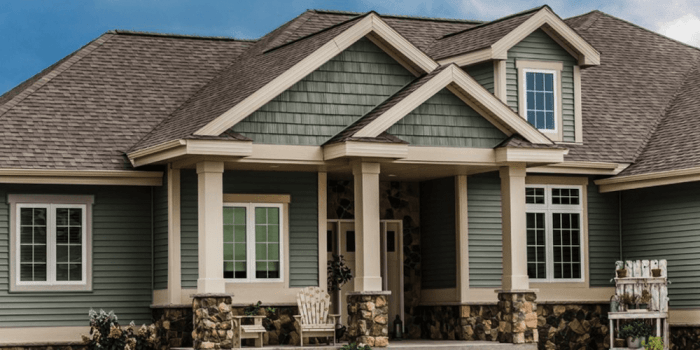
When it comes to choosing the right siding for your home, there are various materials to consider, each with its own unique characteristics. It is essential to select a siding option that not only enhances the aesthetic appeal of your home but also provides durability and requires minimal maintenance.
Siding Materials Available
There are several common types of siding materials available in the market, including:
- Vinyl Siding: Known for its affordability and low maintenance requirements.
- Fiber Cement Siding: Durable and resistant to fire, insects, and rot.
- Wood Siding: Offers a natural and classic look but requires regular maintenance.
- Aluminum Siding: Lightweight and easy to install, but can dent easily.
- Brick Siding: Provides a timeless and elegant appearance, but can be costly.
Choosing the Right Siding
It is crucial to consider factors such as your budget, climate, maintenance preferences, and desired aesthetic when selecting a siding material for your home. The right choice can enhance your home's curb appeal, increase its energy efficiency, and protect it from the elements.
Durability and Maintenance
Each siding material has its own level of durability and maintenance requirements. While vinyl siding is known for its low upkeep, wood siding may need regular painting or staining. Fiber cement siding offers excellent durability and requires minimal maintenance, making it a popular choice for many homeowners.
Popular Siding Materials
Vinyl, wood, fiber cement, and metal are some of the most popular siding materials used in home construction today. Each material has its own unique characteristics and comes with its own set of pros and cons in terms of cost, aesthetics, and longevity.
Vinyl Siding
Vinyl siding is a cost-effective option that comes in a wide range of colors and styles. It is easy to maintain, as it does not require painting or staining. However, vinyl siding may crack or fade over time, and it is not as durable as other materials.
Wood Siding
Wood siding provides a natural and timeless look to a home. It can be painted or stained in various colors and finishes. While wood siding is aesthetically pleasing, it requires more maintenance, such as regular painting or staining to prevent rot and insect damage.
Fiber Cement Siding
Fiber cement siding is a durable and low-maintenance option that can mimic the look of wood or stucco. It is resistant to rot, fire, and insects, making it a popular choice for many homeowners. However, fiber cement siding can be more expensive than other materials upfront.
Metal Siding
Metal siding, such as aluminum or steel, is known for its strength and durability. It is resistant to fire, rot, and insects, making it a long-lasting option for homes. Metal siding comes in a variety of colors and finishes, but it can be prone to dents and scratches.Each of these siding materials offers unique benefits and considerations for homeowners to weigh when choosing the best option for their home.
Eco-Friendly Siding Options
When it comes to choosing siding for your home, opting for eco-friendly options can have a positive impact on the environment while also offering energy efficiency benefits.
Sustainable Siding Materials
There are several sustainable siding materials available that can help reduce the environmental footprint of your home. Some of these options include:
- Reclaimed Wood: Using reclaimed wood for siding helps prevent deforestation and gives old wood a new life.
- Recycled Plastic: Siding made from recycled plastic helps reduce plastic waste in landfills and oceans.
- Composite Materials: These materials combine recycled wood fibers and plastic to create a durable and eco-friendly siding option.
Environmental Impact Comparison
Traditional siding materials like vinyl and aluminum can have a negative impact on the environment due to their manufacturing processes and disposal. In contrast, eco-friendly siding options use recycled materials and have a lower carbon footprint, making them a more sustainable choice.
Energy Efficiency Benefits
Choosing eco-friendly siding can also improve the energy efficiency of your home. Materials like insulated vinyl siding or composite panels can help regulate indoor temperatures, reducing the need for heating or cooling, and ultimately lowering energy costs.
Innovative Siding Designs and Trends
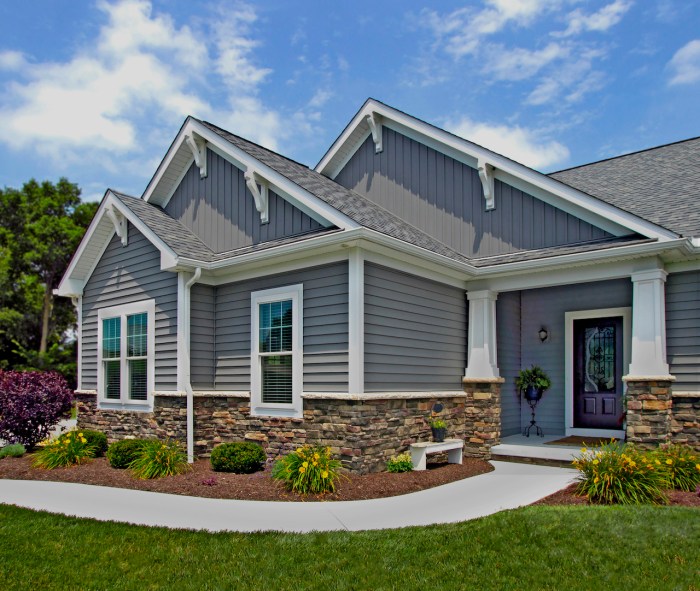
When it comes to siding design, modern trends are all about pushing boundaries and getting creative. Homeowners are increasingly opting for unique options that go beyond traditional materials and colors.
Mixed Materials
One of the popular trends in siding design is the use of mixed materials, such as combining wood with metal or stone. This creates a visually appealing contrast and adds depth to the exterior of a home.
Geometric Patterns
Another trend gaining momentum is the incorporation of geometric patterns into siding design. From chevron to herringbone, these patterns add a modern touch and can make a home stand out in the neighborhood.
Bold Colors
Gone are the days of neutral siding colors - homeowners are now embracing bold and vibrant hues for their exteriors. Whether it's a deep navy blue or a fiery red, bold colors can instantly elevate the curb appeal of a home.
"Innovative siding designs can truly transform the look of a home and increase its value significantly."
Unique Siding Installations
Some homeowners are taking creativity to the next level with unique siding installations. This may include vertical gardens integrated into the siding, asymmetrical patterns, or even 3D textured panels. These installations not only showcase style but also add a touch of personality to a home.
Final Review
Concluding our discussion on new home siding options, we've covered a wide range of materials, designs, and eco-friendly alternatives that can transform the look and feel of any home.
FAQ Insights
What factors should I consider when choosing new home siding?
Consider factors like durability, maintenance, cost, and aesthetic appeal when selecting new home siding options.
Are eco-friendly siding options more expensive than traditional materials?
While initial costs may vary, eco-friendly siding options can offer long-term savings through energy efficiency and sustainability.
How can innovative siding designs impact the value of a home?
Innovative siding designs can significantly enhance curb appeal, increase property value, and set your home apart in the real estate market.


